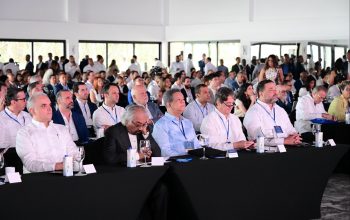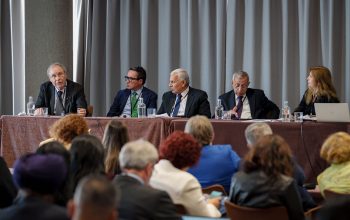news
“The PLD Democracy and Development”, an article by Dr. Leonel Fernández
April 18, 2018
Since the proclamation of the independence of the Republic in February 1844, the goal of the Dominican people has always been to be able to establish a democratic, developed, prosperous society that guarantees social welfare for the majority of its population.
However, in almost two centuries of existence as a nation, that combination of democracy and development had only been conquered during the governments of the Dominican Liberation Party (PLD for its
acronym in Spanish).
In fact, at birth, the Dominican Republic emerged from the rubble. The war against Haiti to conquer its independence left the nascent government totally lacking resources. To deal with this situation, the government of General Pedro Santana began a practice that would have to be carried out for many years: printing paper money without having the backing of the production sector.
The three governments of Santana, which spanned, with
intervals, from 1844 to 1861, when the annexation to Spain took place, were authoritarian, from the political point of view, and ineffective, from the economic perspective.
The same happened with his political rival at the time: Buenaventura Báez. On the five occasions when he held the highest public office, he fostered political chaos; he offered in concession the national sovereignty to any foreign power; and triggered economic ruin and social unrest, in the midst of an
authoritarian style of government.
However, during the nineteenth century there were prominent democratic-liberal political figures, such as Benigno Filomeno de Rojas, Ulises Francisco Espaillat, and Francisco Gregorio Billini. They guided the destiny of the nation, but because of the short span of their governments, they were unable to achieve important development work.
After the Dominican War of Restoration (1863-1865), the only bright spot in
the national history is the rise to power of the Blue Party, through General Gregorio Luperón, in 1879.
Through six Presidents of the Republic, the Blue Party held power for 20 years. At first, his government was democratic. His aspiration was to turn into reality the dream of Juan Pablo Duarte and the pro-independence supporters of a free, democratic, sovereign nation and of progress for all its inhabitants. However, because of the short duration of the presidential
terms of the democratic Presidents, they could not further the economic and social development of the country. The person responsible for fulfilling the latter was, paradoxically, the one who did not exercise power based on democratic-liberal principles: General Ulises Heureaux (Lilís).
Lilís, Mon, Trujillo, and Balaguer
It was during the Lilís tenure that the modern sugar industry began to develop, as well as there was an increase
in the production of tobacco, coffee, and cocoa. Also, it was during his government that the railroads that traveled from Sánchez to La Vega and from Santiago to Puerto Plata were built.
There was measurable development with Lilís in the Dominican Republic, but a total absence of democratic values in the exercise of political power. Lilís was dedicated to eliminating his political opponents while increasing the material wealth of the country; and that made him a
bloodthirsty dictator.
After the political turbulence that ensued at the death of General Lilís, Northwest Line merchant Juan Isidro Jimenes and General Horacio Vásquez emerged as key figures at that time.
But the person that stood out the most during the early years of the twentieth century was Ramón Cáceres (Mon), from Moca, who governed between 1905 and 1911. He directed a remarkable effort of recovery and expansion of the national economy
during those six years.
But, similar to several of his predecessors, he governed with such a harsh hand that he is still remembered today with the phrase “imprisoned by Mon’s guard.”
The figure that succeeded General Mon Cáceres in power, although not in chronological order but in terms of economic and social transformation, was Rafael Leónidas Trujillo.
When he became the highest government authority in
1930, Trujillo found a Dominican Republic with a limited economic scope, converted into a village in practical terms, with a predominantly rural population.
In his more than 30 years of government, the strong man from San Cristóbal contributed to transform our country from the economic and social points of view. He built roads, bridges, schools, hospitals, aqueducts and important public buildings.
He was the creator of the national currency; the builder
of the Central Bank of the Republic; and the person who reduced the external public debt, with the signing of the Trujillo-Hull treaty.
However, despite his measurable achievements, history condemned Trujillo for his political feats. Besides having accumulated great personal wealth, because of his illicit handling of public funds, he became a cruel dictator, who not only imprisoned his enemies but subjected them to persecution, torture and death.
His power was
omnipotent. Nobody escaped his acts of violence, whether Dominican or foreign; men or women; humble citizens or great personalities. In short, a man willing to do everything he considered necessary to maintain the reins of power.
In turn, the seven governments led by Dr. Joaquín Balaguer, a legendary figure, were different from those of Trujillo. The difficult circumstances in the life of the country and its transition process to democracy, led him to apply, at certain
times, strong coercion measures in order to ensure what he considered the necessary political stability of the nation.
His measurable work, however, is indisputable. During his government periods, in general, there were significant levels of economic growth and heavy investments in public works that spread throughout the national territory.
Even with his accomplishments and important contributions made to achieve peaceful coexistence among Dominicans,
certain sectors of the national public opinion consider that he does not have the merits required to be among the champions of Dominican democracy because of the periods of political repression during his 12-years in power and the dispute over some of his electoral victories.
Whites and purples
When Mr. Antonio Guzmán rose to power in 1978, there was great excitement among the Dominican people that the country would finally enter a
new era of consolidation of its democratic institutions, and of prosperity and social justice.
President Guzmán achieved democratic progress in the country. Political prisoners were released, and exiles returned to the country. There were an atmosphere of optimism and people looked towards the future with great hope.
This did not happen, however, from the economic and social points of view. The Dominican Republic could not achieve its goals in those
areas as it had been expected. The governments of the Dominican Revolutionary Party (PRD), both during the mandate of President Guzmán and those of his successors, could not rise to the national expectations with respect to the changes that the country required.
Thus, at the end of the twentieth century, the Dominican Liberation Party (PLD) became the government party with an agenda of reform and modernization of the State, as well as of transformation of the different
areas of the economy and society.
Approaching almost 20 years in power, the party founded by Juan Bosch, even in the midst of national and international obstacles and difficulties, is able to showcase a set of works and projects, both politically and institutionally, and also related to material progress, as it had not been known before in the history of the Republic.
During the five periods of PLD government, the Dominican economy has grown to
impressive levels. The capacity to generate wealth has more than quadrupled. Extreme poverty has practically disappeared. Food security has been achieved. Agricultural production has been boosted. The middle class has expanded. The main infectious diseases have been contained. Maternal and infant mortality have decreased. Life expectancy has increased.
Public institutions have modernized their services. Roads and communication routes have spread throughout the national
territory. Bridges, overpasses, tunnels, and beltways have been built. A modern transportation system was built with the introduction of the Santo Domingo Metro. Tourism has increased. There has been an increase in foreign investment. The free trade zones have developed; and the international presence of the Dominican Republic has never been so remarkable.
In a nutshell, it has been during the government periods of the Dominican Liberation Party that our country has been
able, for the first time, to combine its yearnings for peace and harmony, within the framework of democracy, and certain levels of prosperity, well-being and development, as a result of a sustained expansion of our production capacity and distribution of wealth.
It is acknowledged that the work undertaken during the PLD governments is not perfect. But there is no doubt that it has been, until now, what has come closer to the goals and dreams of the Dominican people to
combine democracy and development.
That is such an important historical legacy that it would surely make Professor Juan Bosch proud; and for that reason, its preservation, at this time, becomes the most important task of the PLD family.






